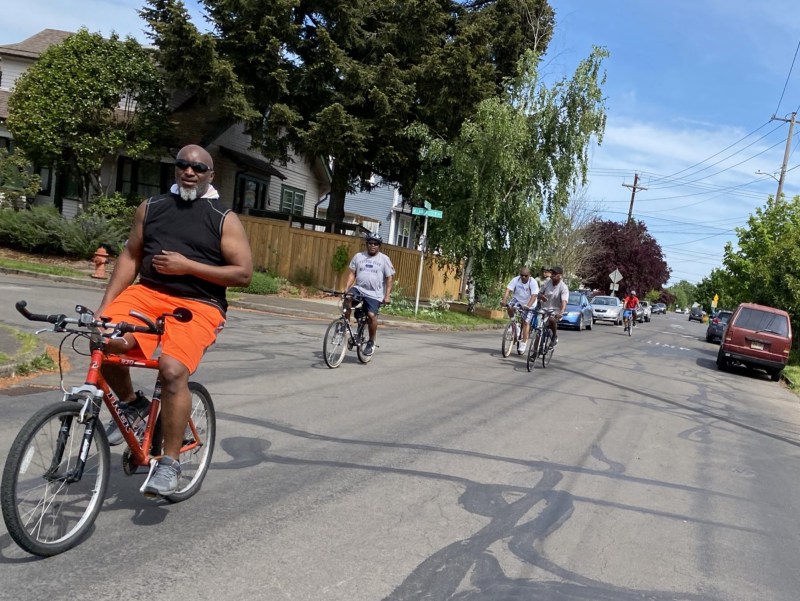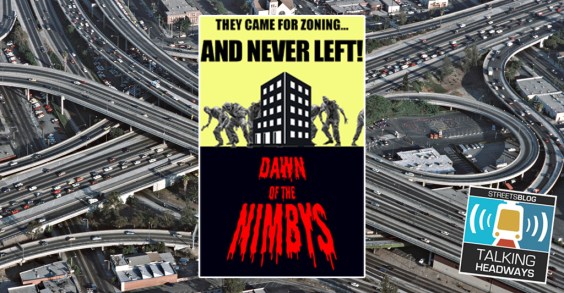Recently The Untokening mobility justice collective presented a talk called "Open Streets for Our Communities during COVID and Beyond," part of their Transformative Talks series, which is co-hosted by Pueblo Planning. The Open Streets conversation was co-facilitated by Active Transportation Alliance advocacy manager (and former Streetsblog Chicago writer) Lynda Lopez and Marcela Guerrero Casas, a native of Bogotá, Colombia, who is helping to introduce that city's car-free Ciclovía event concept to her current hometown of Capetown, South Africa.
During the discussion, Lynda noted that applying an equity lens to an issue like open streets, the international movement to create more space for socially-distanced, car-free transportation and recreation during COVID-19, is not easy. Some folks see equity concerns as an impediment to necessary progress to create a safer and more environmentally sustainable transportation landscape. I personally feel a sense of urgency around improving conditions for walking, biking, and transit due to the fact that climate change will harm BIPOC (Black and Indigenous People of Color) communities the most if we continue our car-centric transportation hierarchy and other practices that fuel climate change.
Lynda opened the discussion by sharing the context of the open streets conversation in Chicago, including Mayor Lori Lightfoot's decision to abruptly close the Lakefront Trail, transit workers calling for personal protective equipment, and high rates of COVID-19 in Black and Latino communities. She said ATA wrestled with how to promote access to public place in the midst of public health recommendations for people to stay home except for essential activities. (Illinois' Stay at Home order classified walking and biking for transportation and exercise as essential.)
One of the big questions Lynda asked was, “Where does the conversation about equitable access to public space fit into food insecurity, housing insecurity, inequitable access to healthcare?” It's worth remembering that these issues tend to be compounded in BIPOC neighborhoods. Lynda stated she would be most interested in having conversations around reallocating space to meet immediate needs and help with residents’ survival of this pandemic. I appreciated that this discussion of open streets focused on people rather than infrastructure changes.
A second larger question Lynda asked was, “Who has access to public space, safely?” In Chicago's BIPOC communities, many people do not feel safe going outside due to issues like gun violence, over-policing, and threats of immigration crackdowns.
Chicago author, educator, and artist Benji Hart, who does a lot of work around prison abolition, recently noted on Twitter that Mayor Lightfoot has chosen to deploy more police to South and West side neighborhoods during the pandemic. While the mayor framed this as providing more resources to underserved communities, Hart argued that "instead of applying this principle to housing, a living wage, access to education and healthcare, she applies it to policing."
Hart added that Mayor Lightfoot has threatened to shut down large gatherings, such as house parties, and send people to jail if necessary, a message that some saw as targeting Black youth. This is during a time when COVID-19 cases are surging in jails and prisons.
In New York City, 90 percent of people arrested for COVID-19-related incidents have been people of color. There have also been accusations of racially-biased social distancing enforcement in Chicago.
This all raises the question, would Black and Brown youth feel safe taking advantage of open streets in their neighborhood, even if done in an Oakland-style Slow Streets format, with no additional policing? Untokening members have argued that if open streets are to be rolled out in BIPOC communities, they must be done in a way that responds to the culture, values, and needs of the community, with community engagement to ask residents what they feel makes sense for their street or neighborhood. (So far in Chicago, the only part of town where residents are being asked for feedback on a possible open streets program is the majority-white 47th Ward, largely comprised of Lincoln Square, where Alderman Matt Martin, who's Black, has launched a community input map.)
I was grateful to come come across a recent Medium article by Ariel Ward, a Black transportation planner, asking for nuance in the open streets and equity conversation. She writes:
You can want open streets and want to hold cities accountable to ensuring new policies do not further harm communities of color. You can want open streets and want to prioritize the acute needs of Black and Brown communities that have been forced to show up for themselves in the midst of a crisis that has impacted them severely. Realizing these ideals in tandem may demand greater imagination and the decentralization of personal desires, but they do not necessitate competition. And yet, I’ve repeatedly observed them held in contempt of one another, particularly in the name of closing streets to vehicle traffic.
Slow Streets have been characterized as a strategy to make essential trips and commutes safer and easier for people who don't have access to cars. However, Lynda brought up the spatial mismatch of where many BIPOC essential workers live and where their jobs are located. “Simply providing someone with a bike and an open street won't necessarily help if they are commuting a long distance,” she noted (although that strategy may be helpful for first- and last-mile trips to and from transit.) Therefore taking steps to ensure that transit is as safe as possible during the pandemic is at least as important as walk/bike interventions.
Streetsblog Chicago has been advocating for bus-only lanes that can help speed up the commutes of essential workers and reduce the risk of exposure on transit. There's also the larger work of pushing for affordable transit-oriented development, along with other social justice goals like a living minimum wage, universal healthcare, ending police brutality, and eliminating food deserts. If residents are negatively impacted by these issues, that's a barrier to them voluntarily using sustainable travel modes.
The issues raised in the Untokening discussion do not have simple answers. While some Chicago community leaders and transportation advocates of color have said they'd be interested in piloting Slow Streets here, I am still concerned that the conversation around open streets in Chicago is dominated by folks from privilege.
To a degree I think there's a responsibility for the Chicago Department of Transportation to do better outreach with BIPOC communities. The city's Vision Zero outreach efforts on the West side were a step in the right direction. However, I don't think a lot of Black and Brown Chicagoans know that CDOT created the covidmobility@cityofchicago.org email address where they can share their experiences and ideas regarding pandemic transportation. The open streets discussion highlights just how important it is to listen to marginalized groups during transportation conversations.
You can watch the full Transformative Talks discussion on Facebook and find a written recap here.






